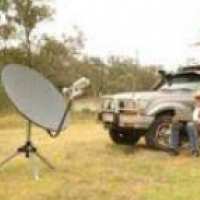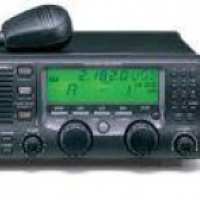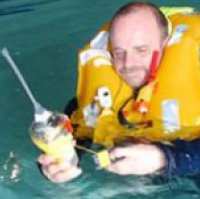Communication
You must have a reliable and effective means of communicating when working off site.
Radios, mobile phones, satellite phones
These may be used to report in that the worker is safe or to summon help or advice, but they rely on the worker being able to operate the radio or telephone in an emergency, and that there is a good signal. There are some smart phone apps that offer additional locating services but again these are dependent on there being a good signal.
Standard Mobile phones
Most of us have one and wonder how we ever managed without them. This dependence is really only painfully evident when we are unable to use our mobile phone for example when we are out of range of a cell tower. The chances of this happening are generally less in developed countries and urban areas around the world but they do still rely on proximity and a general line of sight with cell towers. Signal can be easily disrupted by hills, buildings, and anything that may absorb or block the signal . There is also a range issue based on the power of the transmitter, which includes your handset. If you want to travel into remote rural areas within the UK and abroad and be certain of making contact with somebody in an emergency, you are going to need something better than a standard mobile phone.
| Positives | Negatives |
|---|---|
| Low purchase cost | Limited coverage outside populated areas |
| Fairly low outgoing costs | Useless when there is no signal |
| Very portable | You may need to change provider and SIM card depending upon your location and country |
| Usage based pricing (pre-pay) | |
| You can call anyone for anything | |
| You already have one | |
| Incoming calls are possible | |
| Texts may get through when voice coms fail | |
| Some ability for tracking & location |
Satellite phones

Satellite telephones use an orbiting satellite system to receive and transmit voice and some data between two points on the globe. One problem is that a satellite must be in “line of sight” with the sender and different networks have different coverage’s for various global locations.
One of the better services is provided by Iridium. An Iridium phone gives access to the 66 satellites in the iridium low earth orbit constellation this gives reliable global coverage. The particular phone that suits most application is the Iridiumn Extreme 9575, which is ruggedised and designed for climates from arctic through desert to tropical. There is an explorer pack available which contains everything needed to keep it charged and ready for use in vehicles or in hotels.
| Positives | Negatives |
|---|---|
| Works almost anywhere where there is line of sight with a satellite | Expensive to purchase |
| You can call anyone for anything, you can describe the exact nature of your emergency and perhaps get immediate help | High ongoing costs |
| Small and portable | May not work inside building or where line of sight with satellite is lost |
| Incoming calls are possible | Calls can be expensive |
| Data plans can be very expensive |
Satellite Internet / VoIP
This technology is advancing all the time and systems are becoming more portable. Using a satellite dish and a computer, you can now connect to the internet from almost anywhere, although you will have to chose your provider for the best service to your destination country. Again, this system of communication needs a direct line of sight to a particular satellite. Setup takes between 10 and 20 minutes and once operating the system will allow you to send emails, browse the web and make VoIP (voice over IP) phone calls.
| Positives | Negatives |
|---|---|
| Works almost anywhere depending on provider | Fairly costly to purchase |
| You can call anyone for anything, you can describe the exact nature of your emergency and maybe get immediate help | Takes time to setup |
| High-speed data for example, you can send photos of the problem and even receive video back of the solution | Large dish required (900mm) although getting smaller and lighter as technology advances |
| You can search the internet for your own solution | Variable quality of voice calls |
| Fairly low operating costs | VoIP may not work well due to satellite delay |
| Low cost data and VoIP calls | Requires technical skill to operate and set up. e.g. knowing where the satellite is |
HF and VHF Radio

This method of communications is by far the oldest. HF and VHF radio has been used for decades. Modern options like GPS location sending, person-to-person calling by tone, dial-out to standard telephones are all now possible with modern HF Radio sets. It is also possible to send messages via SMS and even email. Despite all this functionality, HF / VHF radio’s Achilles heel is that is terrestrial based and it relies on the propagation of radio signals from one ground station to another. This means that due to atmospheric conditions, obstructions and interference you may not always be able to contact the person or service you are trying to speak with. Even trees and foliage can interfere with the signal.
| Positives | Negatives |
|---|---|
| Works in most countries but range is limited to the power of the transmitter and terrain | Expensive initial setup |
| Two way voice communication and potentially data depending on the age and technology in your set | Some technical knowledge required |
| Can request help in non-life threatening situations | Large external antenna usually required which may need tailoring to the frequency and wavelength being used |
| Can send exact location with each message or periodically | Not 100% guaranteed to make contact with desired person |
| Moderate operating costs | May require a license to operate |
| Calls between HF/VHF systems are free | |
| Can receive incoming calls |
Emergency Position Indicating Radio Beacon (EPIRB)
EPIRBs are generally installed on boats and can either be operated automatically after an incident or manually. In most countries they are mandated to be used in all commercial shipping. However, they are also used on yachts and leisure boats. 406 MHz EPIRBs work with the Cospas-Sarsat polar orbiting satellite system, giving true global coverage. There is an alert delay of about 45 minutes dependent on when the satellites come into view on the horizon.The satellite can determine the position of your EPIRB to within 5km (3 miles). The coded message identifies the exact vessel to which the EPIRB is registered. This information allows the rescue services to eliminate false alerts and launch an appropriate rescue.GPS-enabled EPIRBs have a built-in transmitter which will typically alert the rescue services within 3 minutes and to a positional accuracy of +/- 50 metres (updated every 20 minutes) given a clear view skywards.
Some EPIRBs also have a secondary distress transmitter. This transmits on 121.5 MHz and is used for "homing" purposes. When the rescue services get close, this allows them to direction find on the signal. Some EPIRBs also have a high brightness LED flashing light that aids final visual location.There is a delay, potentially considerable, between operation and responders attending the scene.
 Once you have purchased your EPIRB you need to register it in your country. You need to provide contact information plus information about the vessel it is to be used on. This is vitally important because if the EPIRB is activated the search authorities in your country will try to make contact with you o r other people you have listed to enable them to see if a rescue is required.
Once you have purchased your EPIRB you need to register it in your country. You need to provide contact information plus information about the vessel it is to be used on. This is vitally important because if the EPIRB is activated the search authorities in your country will try to make contact with you o r other people you have listed to enable them to see if a rescue is required.
In the UK you need to register with the Maritime and Coastguard Agency, in the USA registration is through NOAA (National Oceanic and Atmospheric Administration).
For more information about where and how to register your EPIRB please contact your local supplier or see the country by country list on the Cospas-Sarsat website.
Personal Location Beacons
Personal Location Beacons (PLB’s) work in exactly the same way as EPIRBs by sending a coded message on the 406 MHz distress frequency which is relayed via the Cospas-Sarsat global satellite system.
However, there are a number of differences between them. PLBs are designed to be carried on the person so they are much smaller, some such as the Fast find are not much larger than the size of a mobile phone. PLBs are desi gned to be used anywhere in the world, on the sea and also on land. Some don't float but may come with an additional floatation sleeve which they should be carried in.
PLBs, once activated, will transmit for a minimum of 24 hours; while the battery life on an EPIRB is at least double (a minimum of 48 hours). An EPIRB is registered to a vessel, whereas a PLB is registered to a person. This means that if you are crewing a yacht and you switch to a new yacht the plb is still correctly registered; however, if you have an EPIRB and buy a new yacht you will need to re-register it when installing in your new boat.
![]() FIND 220 PLB is a lifesaving beacon with buoyancy pouch included, designed for marine enthusiasts and adventurers (see adjacent image)
FIND 220 PLB is a lifesaving beacon with buoyancy pouch included, designed for marine enthusiasts and adventurers (see adjacent image)
The FAST FIND 220 PLB uses advanced technology packed into a simple, lightweight, palm sized unit. Using the dedicated 406MHz frequency, Fast Find 220 transmits your unique ID and precise GPS location to the global network of search and rescue satellites. Within minutes rescuers are alerted to your situation, and receive regular position updates. Finally, emergency services can home in on your beacons 121.5MHz transmission to find you. If you find yourself in a remote area without any other form of communication, activating your FAST FIND 220 will summon emergency assistance.
The 220 is subscription-free and does not rely on commercial call centres.
For more information on PLBs please visit the Fast Find website.
| Positives | Negatives |
|---|---|
| Works almost anywhere | Fairly expensive to purchase |
| No ongoing costs | No ability to communicate the nature of the emergency |
| Very small and portable | No ability to get any immediate assistance (can’t ask advice) |
| Very simple quick to deploy | Cannot be used for anything other than life threatening situations |
| No feedback, you have no idea who or if anybody is on their way or how long help will be |


